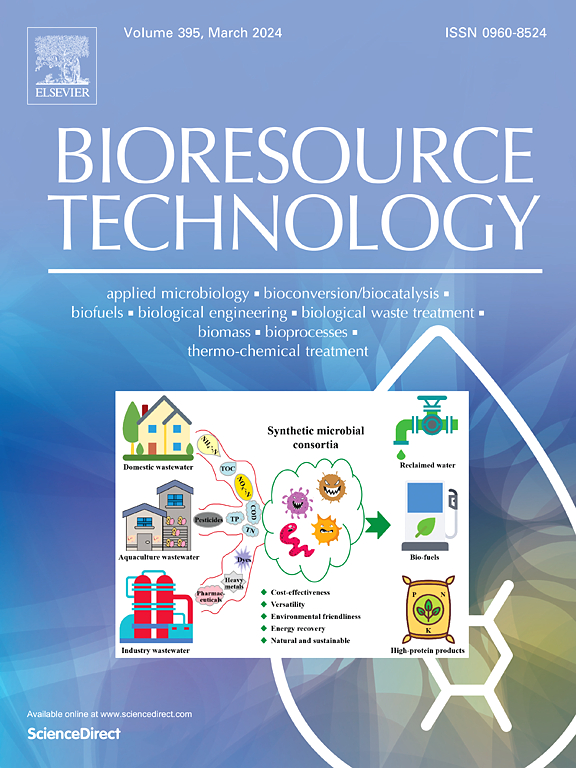果蔬废弃物两段厌氧消化:热预处理暗发酵与富糖废水共消化优化
IF 9
1区 环境科学与生态学
Q1 AGRICULTURAL ENGINEERING
引用次数: 0
摘要
水果和蔬菜垃圾(FVW)对环境构成挑战,但可以通过暗发酵(DF)和两阶段厌氧消化(TSAD)产生H2和CH4。本研究考察了不同培养基和接种物在DF中的热预处理效果,并对不同糖果酱废水(JWW)作为可再生糖源进行了试验。60 °C热预处理30 min可使h2生成物富集,而培养基对h2生成物无显著影响。葡萄糖和蔗糖的H2产率分别为6.5和45.8 NmL/gVS。JWW被证明适用于原燃料和预处理燃料的DF, H2产率分别为67.1和99.5 NmL/gVS。经DF处理后的挥发性脂肪酸在JWW_FVW_1:1中达到7.2 g/L的活性发酵途径。在TSAD中,CH4产量达到184 NmL/gVS,超过了常规的单级消化。这些结果表明,使用FVW和JWW的TSAD系统具有同时高效生产H2和CH4的潜力。本文章由计算机程序翻译,如有差异,请以英文原文为准。
Two-stage anaerobic digestion of fruit and vegetable waste: optimization of dark fermentation through thermal pretreatment and co-digestion with sugar-rich wastewater
Fruit and vegetable waste (FVW) poses environmental challenges but can be valorized via dark fermentation (DF) and two-stage anaerobic digestion (TSAD) to produce H2 and CH4. This study evaluated the effects of culture medium and thermal pretreatment of inoculum in DF, testing various sugars and jam wastewater (JWW) as a renewable sugar source. Thermal pretreatment at 60 °C for 30 min enriched H2-producers, while culture medium had no significant effect. Glucose and sucrose allow H2 yield of 6.5 and 45.8 N mL/gVS, respectively. JWW proved suitable for DF of both raw and pretreated FVW, achieving H2 yields of 67.1 and 99.5 N mL/gVS, respectively. Volatile fatty acids after DF indicated active fermentation pathways reaching 7.2 g/L in JWW_FVW_1:1. In the TSAD, CH4 production reached 184 N mL/gVS, surpassing conventional single-stage digestion. These results demonstrate the potential of TSAD systems using FVW and JWW for efficient simultaneous H2 and CH4 production.
求助全文
通过发布文献求助,成功后即可免费获取论文全文。
去求助
来源期刊

Bioresource Technology
工程技术-能源与燃料
CiteScore
20.80
自引率
19.30%
发文量
2013
审稿时长
12 days
期刊介绍:
Bioresource Technology publishes original articles, review articles, case studies, and short communications covering the fundamentals, applications, and management of bioresource technology. The journal seeks to advance and disseminate knowledge across various areas related to biomass, biological waste treatment, bioenergy, biotransformations, bioresource systems analysis, and associated conversion or production technologies.
Topics include:
• Biofuels: liquid and gaseous biofuels production, modeling and economics
• Bioprocesses and bioproducts: biocatalysis and fermentations
• Biomass and feedstocks utilization: bioconversion of agro-industrial residues
• Environmental protection: biological waste treatment
• Thermochemical conversion of biomass: combustion, pyrolysis, gasification, catalysis.
 求助内容:
求助内容: 应助结果提醒方式:
应助结果提醒方式:


